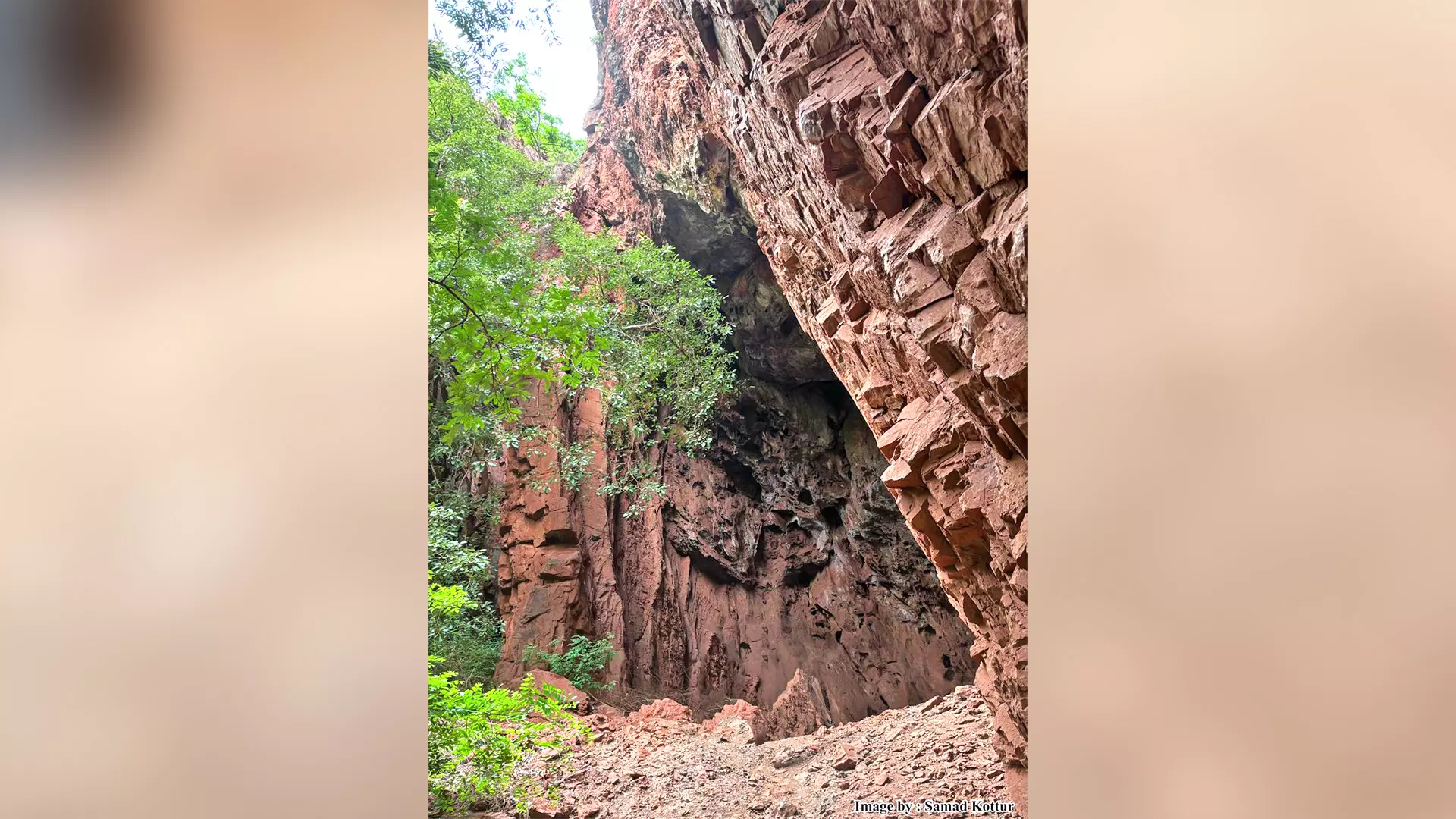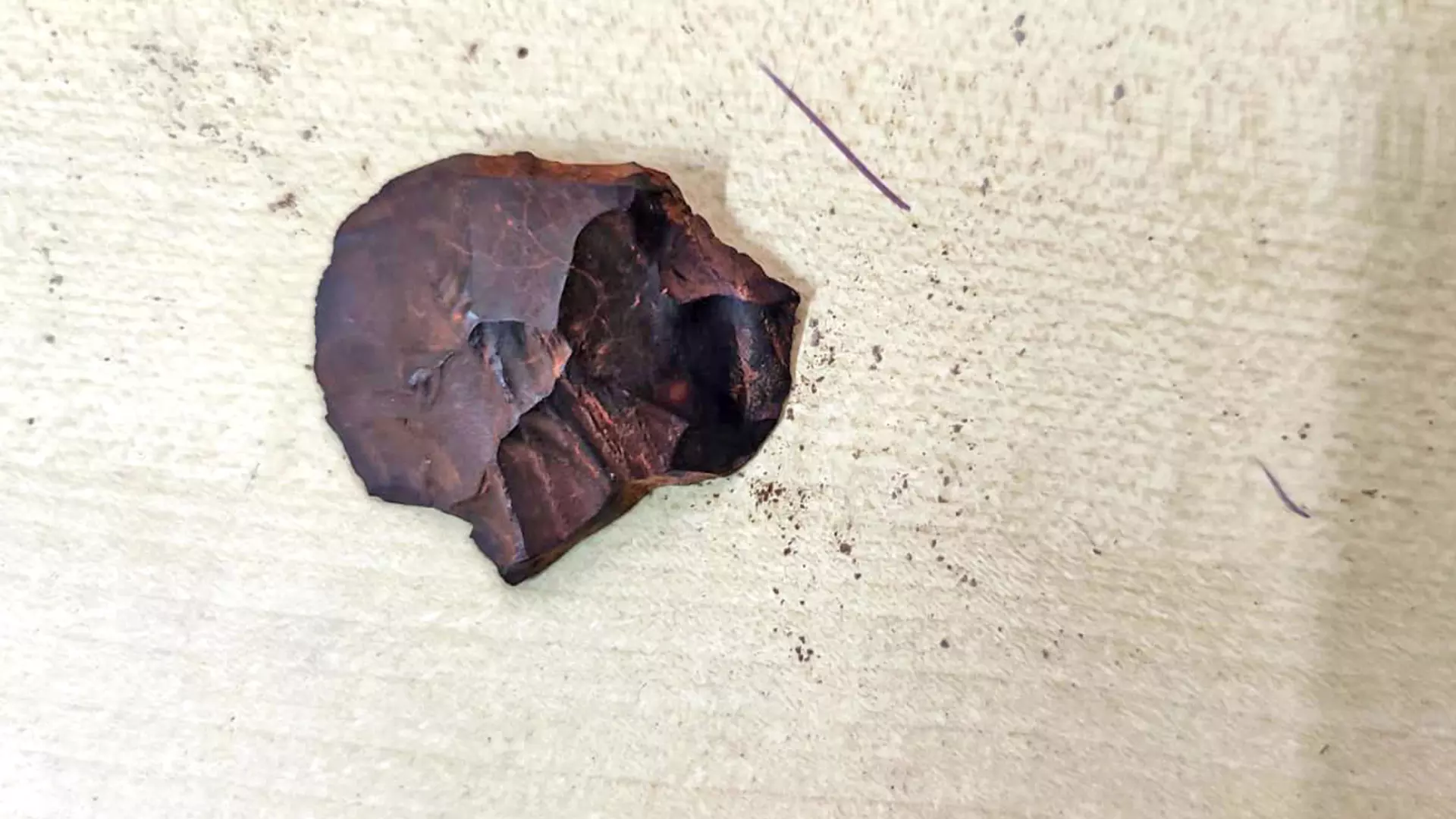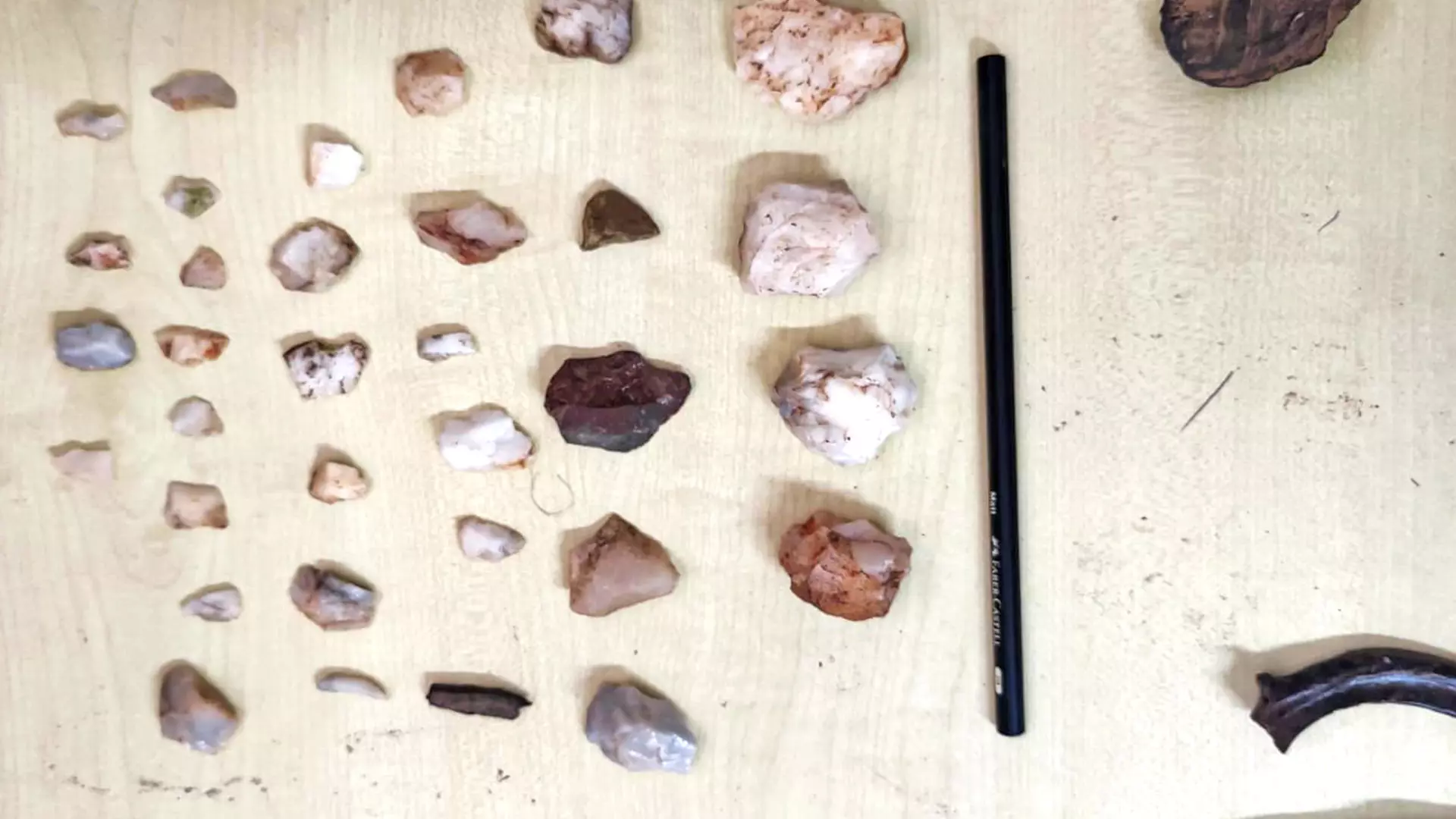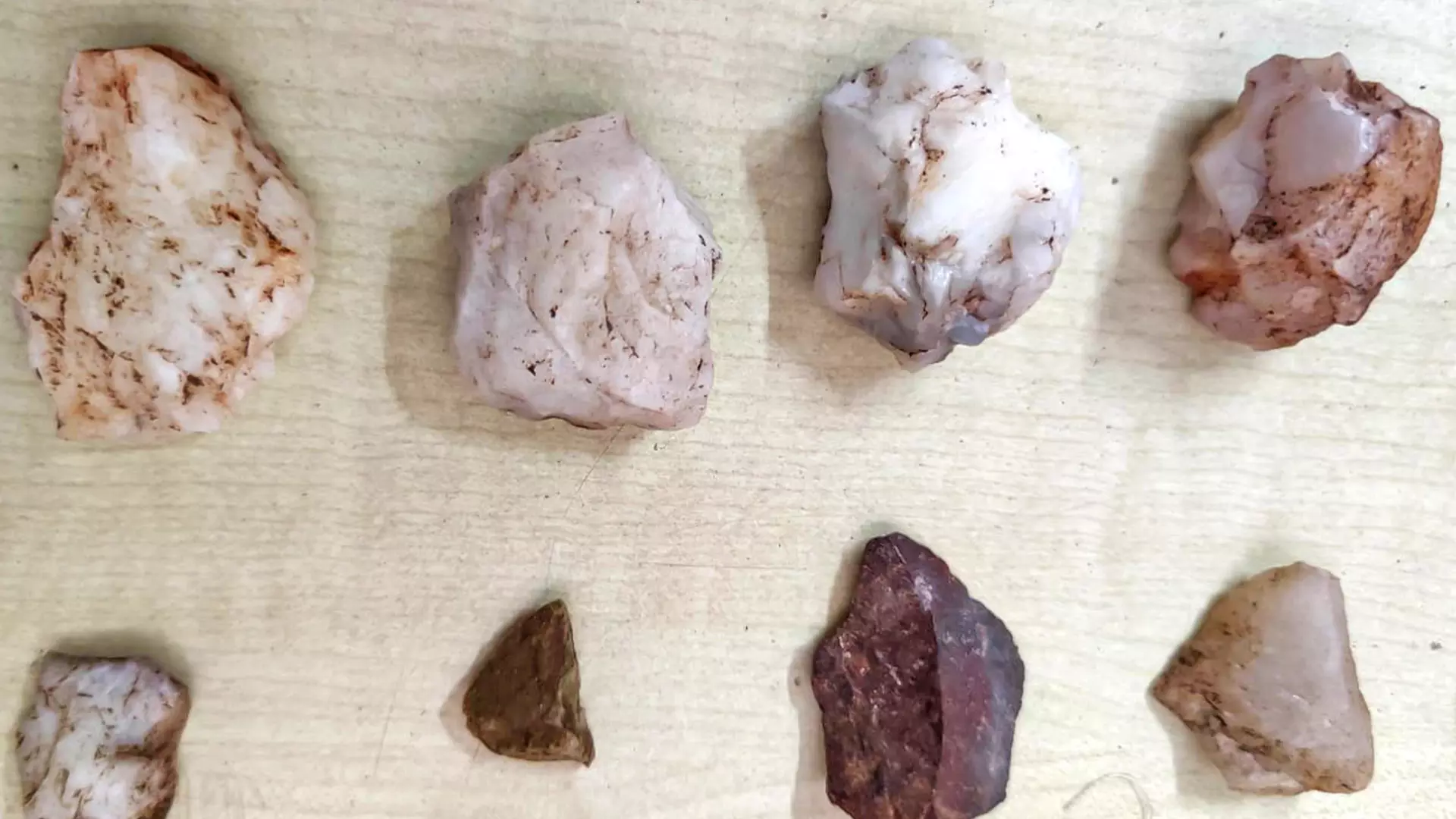
- Home
- India
- World
- Premium
- THE FEDERAL SPECIAL
- Analysis
- States
- Perspective
- Videos
- Sports
- Education
- Entertainment
- Elections
- Features
- Health
- Business
- Series
- In memoriam: Sheikh Mujibur Rahman
- Bishnoi's Men
- NEET TANGLE
- Economy Series
- Earth Day
- Kashmir’s Frozen Turbulence
- India@75
- The legend of Ramjanmabhoomi
- Liberalisation@30
- How to tame a dragon
- Celebrating biodiversity
- Farm Matters
- 50 days of solitude
- Bringing Migrants Home
- Budget 2020
- Jharkhand Votes
- The Federal Investigates
- The Federal Impact
- Vanishing Sand
- Gandhi @ 150
- Andhra Today
- Field report
- Operation Gulmarg
- Pandemic @1 Mn in India
- The Federal Year-End
- The Zero Year
- Science
- Brand studio
- Newsletter
- Elections 2024
- Events
Unveiling the secrets of Sanduru: Archaeological discovery reveals ancient human habitation

Sanduru in Karnataka’s Bellary district is known for its rich manganese deposits. The region, in fact, produces 90% of manganese ore of the state and is frequented by tourists because of its cooler climatic conditions. A recent archeological discovery at the Navaluti Cave in the area is set to add to its charm.Archaeologists and nature lovers have found a cave site of the Stone Age in the...
Sanduru in Karnataka’s Bellary district is known for its rich manganese deposits. The region, in fact, produces 90% of manganese ore of the state and is frequented by tourists because of its cooler climatic conditions. A recent archeological discovery at the Navaluti Cave in the area is set to add to its charm.
Archaeologists and nature lovers have found a cave site of the Stone Age in the dense forests of Sanduru taluk in Bellary district.

The Navaluti Cave is amid dense forest and this made reaching the site difficult.
The region has been explored by geologists and environmentalists since the 1870s, but previous expeditions by archaeologists focused on the plains and isolated granite hill ranges surrounding the Sanduru uplands. Although the presence of caves was reported, the subsurface evidence of stone tools and other remnants of human activities were overlooked.
In the 1870s, British geologist and archaeologist Robert Bruce Foote worked extensively in the area, focusing on the commercial importance of the Sanduru Schist belt. He identified sources of exotic rocks found in the Sanduru belt and visited the Sanganakallu Neolithic site.
“It requires an archaeologist’s spade to reveal the buried material and also intuitively search for the presence of early humans in the cave floor deposits,” Dr Koresattar, adjunct professor of Archaeology at National Institute of Advanced Studies, Bengaluru, told The Federal.


The discoveries made from the site.
Dr Koresattar began investigating Neolithic and early agricultural settlements at Sanganakallu in 1997. He also started documenting the biodiversity of trees in the Sanduru forests to understand changes in woodland vegetation due to climate change and human activity. Environmentalist Dr. Samad Kottoor assisted in the documentation.
“I initiated a research project on the reconstruction of early agriculture dating back to the Neolithic times (2200 to 1400 BC) way back in 1997 and continued excavations between 2002 and 2005. During this period, our team visited the Sanduru forest to collect wood samples from a variety of trees in order to identify the trees and plant food relevant to the Neolithic people of the region. But the caves were inaccessible because of dense forest. Yet we persisted because we were sure of the potential of the caves as archaeological sites of importance,” Dr. Koresattar said.
“There was a delay in accessing the caves. This happened because we were busy with the excavation of Sanganakallu Neolithic site near Bellary and the limestone caves of Billasurgam in Kurnool district. The caves were priority because there were a lot of ongoing debates on the colonisation of the Indian subcontinent by Homo Sapiens. Further, it was usual to consider limestone caves as potential places for discovering human fossils, unlike the caves in the Sanduru belt. The Navaluti Cave is formed by igneous rocks. Following this, I got busy with the Robert Bruce Foot museum project in order to stop the mining of granite at the Sanganakallu site and launched a public outreach to save both the natural and cultural heritage of the region. Now, the museum functions as a school for educating the society about the prehistoric cultural heritage of the region to students and laymen of all walks of life,” Dr. Koresattar said.
In June 2024, a joint expedition was launched by archaeologists and environmentalists, members of the Bellary Heritage Trust, and the Robert Bruce Foot Archaeological Museum. The team visited the Navaluti cave and Kammathuru ancient iron smelting sites.
On June 30, 2024, the team found evidence of Stone Age men living in high-altitude caves in the region, dating back at least 10,000 years.
Interestingly, the first inkling of human existence in the caves came from ash accumulations.
“I noticed a large quantity of ash accumulated inside the cave, indicative of human presence. The ash was preserved at the site since it was not exposed to rain and sun for a prolonged period. I communicated my observation to Dr. Ravi Koresattar. In his archaeological investigations, the human occupation of the cave was established. Microliths stones were also identified at the site,” Dr. Samad Kottoor told The Federal.

The discoveries made at the Navaluti Cave confirmed the ranging habits of the Neolithic people. The people who inhabited the caves used to travel long distances for identifying the resources needed for their sustenance. The discovery provided the archeological team with renewed opportunity to plan a multidisciplinary research design to understand the adaptive strategies of forager hunter communities living in the area.
The cave is approximately hundred feet in height, 80 feet in width, and 40-45 feet deep. It has formed in the Precambrian rocks, unlike the limestone caves investigated by Robert Foote in the Kurnool district of Andhra Pradesh about 100 km from Bellary.
According to Dr. Koresattar, the discovery “explodes the myth that hunters and foragers did not penetrate forest ecosystems and preferred open grasslands”. He further mentioned that “the presence of microliths and animal bones have given good clues about the past human activity, perhaps dating back to 25,000 years, when the global climate was dry and forests had opened up”.
Experts say the animal bones found at the site represent domesticated cattle and goats and the team has registered it as “indisputable evidence” of cave occupation during the Stone Age.
